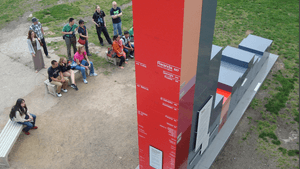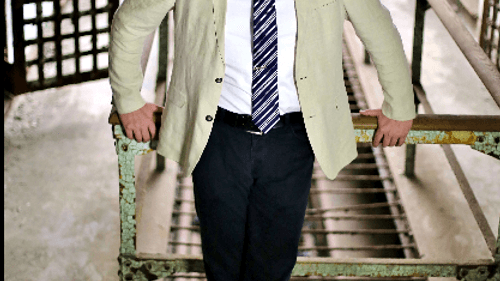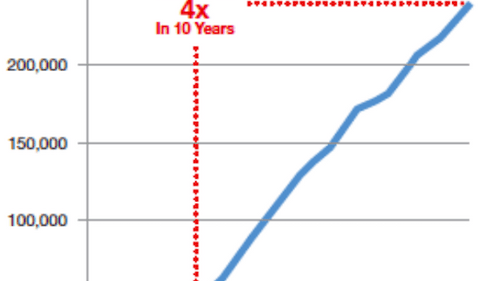Stay in the Loop
BSR publishes on a weekly schedule, with an email newsletter every Wednesday and Thursday morning. There’s no paywall, and subscribing is always free.
Bringing the 19th century into the 21st
Eastern State Penitentiary engages big audiences, bigger questions

“But were you scared?” I pressed Sean Kelley. He’s a senior vice president and director of interpretation at Eastern State Penitentiary, considered one of the most haunted places in the country. I figured he knew from scared. He admitted he was, but “at some point you have to ask yourself: if we’re not willing to take this risk, what’s the point?”
Who are we?
I was fascinated by a talk Kelley gave about programming decisions at Eastern State because it included so many valuable insights that could be applied to theater. In 2009, Kelley began a massive rethinking of the ways guests interacted with the museum. It was a years-long process during which the staff and other stakeholders looked hard at the very purpose of the site’s existence.
Eastern State staff divided everyone who came through its imposing stone door into five categories. Group five covered those already deeply invested in the subject and its presentation: prison historians, museum educators, insiders. Group one held those with no interest in the museum.
Kelley and his team admitted that fives would always visit and benefit from visiting the site, and ones would probably never be engaged. The tour guides knew they loved engaging with fours — people with a high level of interest who asked lots of good questions.
But Kelley believed the true audience for the museum was the twos and threes, those who could be engaged with the right amount of forethought and care. As museum staff designed new tours, exhibits, and experiences, they aimed their ideas at the twos and threes.
Who are you?
Who are theater’s twos and threes? The typical theatergoer is a five. The person is in the industry herself or knows someone involved in a production. Theater fours, subscribers who are avid theatergoers, attend shows at the major houses but rarely at smaller or more experimental ones.

In the ongoing conversation about how to bring more people into the theater, we always talk about an aging audience, and sometimes we lament our insider audience. If we discuss those who aren’t currently joining us, it’s usually in terms of convincing them to buy into what we do. At worst, we complain about a dumbed-down and deteriorating society that doesn’t respect “capital T” theater.
If we feel resentful or paternalistic about our twos and threes, why should they want to enter our houses? Eastern State has one of the youngest museum audiences in the city. That’s not because millennials can’t get enough of 19th-century prisons. It’s because the experience is intentionally designed to welcome them.
Of course, the museum experience differs from the theater experience — not least, as Kelley noted, because when museumgoers are bored, they can walk out the door. As a result, the museum has an incentive to consider audience experience deeply and to think about how to maintain interest throughout a visit.
Theater audiences are captive audiences, and as a result we tend to take them for granted once their butts are in our seats. However, designing our work as though they could leave at any point might help create an experience that would make them more likely to return.
Why should we exist?
Creating experiences for twos and threes doesn’t mean pandering, and it doesn’t require compromising our values. In fact, it may mean leaning into them more deeply. Eastern State asked, “Why should anyone come here?”
They didn’t just try to figure out “What do we provide?” They also asked, “Why should we exist?”

One of the institution's answers to that question was, “To reflect on the issue of criminal justice.” But the prison exhibits walked people through the history of incarceration from Eastern State's 1829 opening until it closed in the 1970s. There it stopped. Considering that mass incarceration is what Kelley calls the “civil rights issue of our time,” the omission was glaring.
He mentioned the moral implications of Eastern State’s failure to address the issue to his colleague Amy Hollaman. “Oh, we’re saying something,” she replied. “Our silence speaks volumes.”
Kelley wanted to bring the issue into the prison site, but he was worried. “When you’re running a nonprofit, there are so many people who are in a position to criticize.” He worried about the response from his board, whom he expected to be risk averse. He worried about the response from the city to criticism of the criminal justice system. He knew his marketing team would be concerned about the challenges of selling a tourist destination that points to structural racism. He worried about the tour guides, whose job description would now include engaging in dialogue about a deeply divisive and emotional issue. And he that worried visitors would view Eastern State as a mouthpiece for liberal propaganda.
So, yes, Kelley was scared. However, Eastern State went on to erect one of its most memorable exhibits, a multiton steel bar graph of incarceration statistics, including racial data and comparisons with other nations. Then they waited for the blowback. Instead, the audience grew.
It was a young audience, who took photos with the graph and shared them on social media. Visits to Eastern State continued to rise. The board and the city were supportive. The staff made it work.
In conversations with theater makers, especially those who work for large institutions, it’s not uncommon for an exciting new idea or a deeply needed change to get derailed by the thought that the subscribers would never go for it. Eastern State’s experiences encourage us to challenge that idea by finding and embracing our twos and threes and trusting them to respond to risk.
What, When, Where
Prisons Today: Questions in an Age of Mass Incarceration. Ongoing at Eastern State Penitentiary, 2027 Fairmount Ave., Philadelphia. (215) 236-3300 or easternstate.org.
Sign up for our newsletter
All of the week's new articles, all in one place. Sign up for the free weekly BSR newsletters, and don't miss a conversation.
 Cara Blouin
Cara Blouin